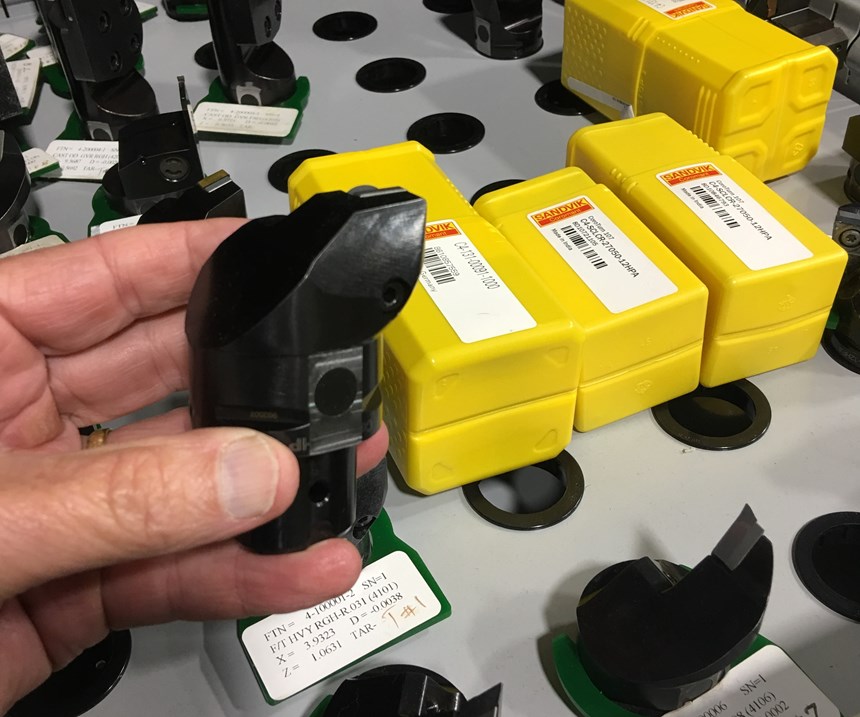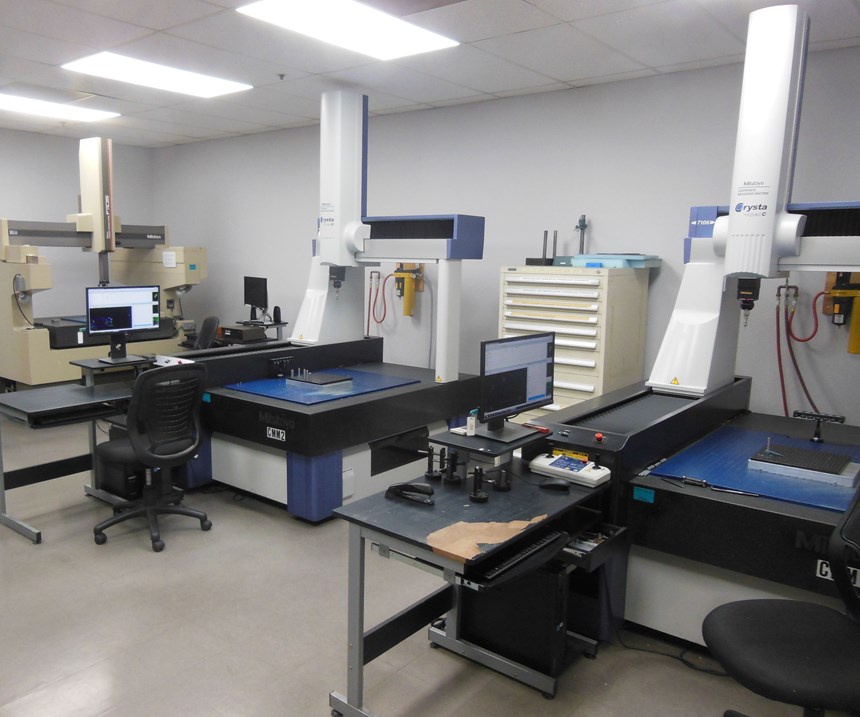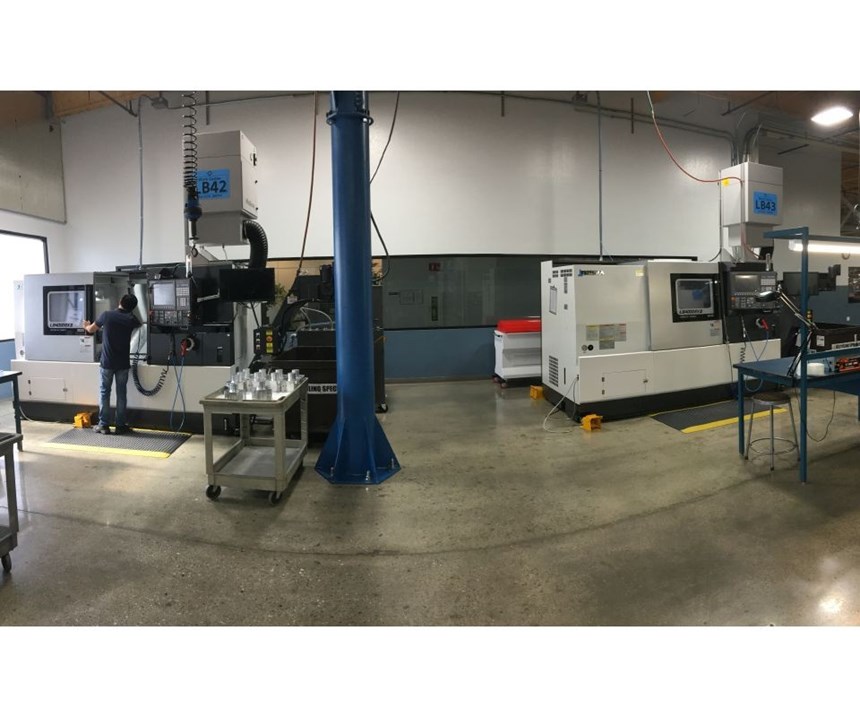A strong relationship with suppliers is an important part of a shop’s success. When the two can come together to tackle important shopfloor concerns, resolution comes more quickly and results are usually more effective and long-lasting. One shop in the San Jose, California, area recently leaned on one of its machine tool suppliers to help implement strategies for reducing setup times and streamlining the process, and it’s paying huge dividends.
Tackling Challenges
Micro-Mechanics designs, manufactures and markets high precision parts and tools used in process-critical applications for the semiconductor and other high technology industries. CEO Chris Borch founded the company in 1983 in the back of a friend’s hat sewing factory in Singapore. He says he stumbled upon the need for a high precision tool that would be used in the production of semiconductors, so with only $600 in startup money he was able to pick up a lathe and a mill to begin making the very small part used in the chip assembly.
During the next 35 years, the company has grown to serve a worldwide base of customers from five manufacturing facilities located in Singapore, Malaysia, China, the Philippines and the U.S., along with a direct sales presence in Taiwan and Europe. That brings us to the Morgan Hill, California, location, dedicated to U.S. customers and employing about 50 people producing parts for the aerospace, laser and semiconductor industries. These industries are particular in their machining specifications, and they generally require small quantities. So Micro-Mechanics is pressed to find ways to manage the high mix well.
Of course, high-mix, low-volume work is not uncommon, as more and more U.S. manufacturers are facing it every day. Micro-Mechanics, however, also has the challenge of its location in a particularly high-cost geography and uses that constraint as motivation to work harder to find new ways to be competitive.
Nimble Efficiency
One of the company’s overarching philosophies is very lean production, eliminating as much setup time as possible by incorporating a lot of offline processes. The production floor has high utilization relative to direct labor. The company works with its suppliers to strip away the non-value skills from the setup time.
On the production floor, set off from several mills are two Okuma LB4000 EXII two-axis turning centers. These machines are dedicated strictly to production turning operations—proven parts and processes. Most of the parts the company runs require significant milling work as well, but to simplify the setup process, that work is reserved for the milling machines across the aisle.
In addition to having a redundant production machine, Micro-Mechanics also has a prototype engineering division where milling and turning equipment with the same configuration as the production machines are used to develop and prove out processes before sending jobs to the floor. Process optimization begins with the prototype machines, where improvements can be developed without impacting production jobs.
Clear Direction
According to Mr. Borch, a big part of the success on the Okuma machines comes from the tool presetting. The programmers send the tooling requirements to the presetting department, where tooling data is tracked and maintained. The company pays close attention to tool wear and tool life expectations and applies its experience in predicting tooling performance in future work. A high-accuracy measurement system is used for the presetting geometry. The information, including diameter, tool tip and tool life, can then be written to an RFID chip, which is embedded into the Capto toolholders. By the time the tooling reaches the machines, the only concern for the operator is following the prepared script to place it into the correct turret positions, as all of the tool data is automatically read and captured by the Okuma control.
Micro-Mechanics is driven by the idea of digital manufacturing, always seeking opportunities to reduce user error by eliminating data entry. Automatically establishing tool offset and geometry data via embedded RFID hardware and Okuma control software significantly reduces one of the most common sources of error. The company also worked with Okuma to develop a process to eliminate errors associated with calling the appropriate program from a traditional paper ticket. Okuma’s software team created an app, called the Micro-Mechanics Program Management Interface, that uses a barcode scanner and QR code to automatically call up the appropriate program information. As added protection, the QR code automatically imports 3D models of the part, tooling and workholding into Okuma’s Collision Avoidance System (CAS), which monitors machine position in both manual and automatic operation modes to avoid crashes.
First-run parts for each job are handled in the engineering department, where the setup and production process can be refined without slowing other jobs that are running on the production machines. A traveler is drawn up that communicates the raw materials that will move through the facility with the job and all the operations that will be applied to it until it is a finished part. At the top of this traveler is a QR code that is used to identify the part that is being made.
When the job is ready to be run in the production environment, the operator scans the QR code to access the company’s network and find all the setup documentation and modeling related to the part. The imported information includes the part program, the collision avoidance model data, the tooling that is in the turret, the features to be inspected, and any additional documentation that the operator will need. The operator can view the information on an external monitor that mounts to the side of the Okuma control, providing a much larger viewing area.
With the latest version of the setup data automatically loaded, CAS is able to virtually check for interference and ensure that a collision will not occur once the machining cycle is started.
The app is performing as envisioned, simplifying the setup process and eliminating potential user error. Mr. Borch explains, “From a digital standpoint, before the app, we had to go in and attach the tools manually to those positions. Now it’s all done simply by scanning the QR code. It mimics physically putting those tools in. We strive to eliminate setup time on the line.”
Because lathe tools are difficult to set, shops may have a tendency to leave them in the turret if there are available positions. But modeling the extraneous tools is impractical, and the odds of a collision can quickly increase with them still in play.
Micro-Mechanics’ policy is to remove all the workholding from the machine and all the tools from the turret and clear all the tool data and collision avoidance data that is held in the control each time a new job is set up. This process ensures that only what is needed for the next job is present in the ensuing setup. When the QR code for the next job is scanned, all the data from the previous job is automatically cleared and all of the data for the new job is loaded into the control.
Results Speak Volumes
Not only does the app greatly reduce errors in setup, it has also largely cut setup times. Mr. Borch says jobs that in the past would commonly take hours to set up can now be done in as little as 10 minutes.
As the company adds additional Okuma turning centers, the app can easily be loaded onto the new machines. According to Casey Croussore, senior software engineer at Okuma, it could also be expanded to accommodate machining centers. “We can’t put the app in a box and sell it as-is because it is written around Micro-Mechanics’ architecture,” Mr. Croussore says. “But the same technology can be used with pretty much any application or customer, developing it case by case.”
Micro-Mechanics has maintained a strong working relationship with Okuma and its integrator, Gosiger, to cut costs and streamline its production process. They continue to look for further ways to automate as much as possible, increase efficiencies and minimize errors. As the company continues to expand and add capabilities, this strategy will play a key role.
Related Content
Getting More Production From Swiss Turning Centers
Buying a new CNC Swiss turning center is a substantial investment. For the best return, look closely for capabilities that enable the best utilization of the machine.
Read MoreShop Sets its Sights on Precise Tool Alignment
A Wisconsin shop has found that visual tool alignment technology has improved tool life and surface finishes for its Swiss-type lathes while increasing throughput as well.
Read MoreLaser Technology "Turns" into a Turning Tool
This new technology uses a laser to act as a cutting tool to "turn" parts from solid barstock. This high-speed precision turning machine is especially useful for micromachining, enabling high accuracy for small, complex parts that are often delicate and difficult to machine when implementing conventional turning processes.
Read More5-Axis Machining Centers Transform Medical Swiss Shop
Traditionally a Swiss machine shop, Swiss Precision Machining Inc. discovers a five-axis machining center that has led the company to substantial growth. (Includes video.)
Read MoreRead Next
The Effects of Automation on Manufacturing
Companies that are not currently using automation in their manufacturing processes should be considering it.
Read MoreDo You Have Single Points of Failure?
Plans need to be in place before a catastrophic event occurs.
Read More5 Aspects of PMTS I Appreciate
The three-day edition of the 2025 Precision Machining Technology Show kicks off at the start of April. I’ll be there, and here are some reasons why.
Read More













.jpg;maxWidth=300;quality=90)




.jpg;maxWidth=300;quality=90)









